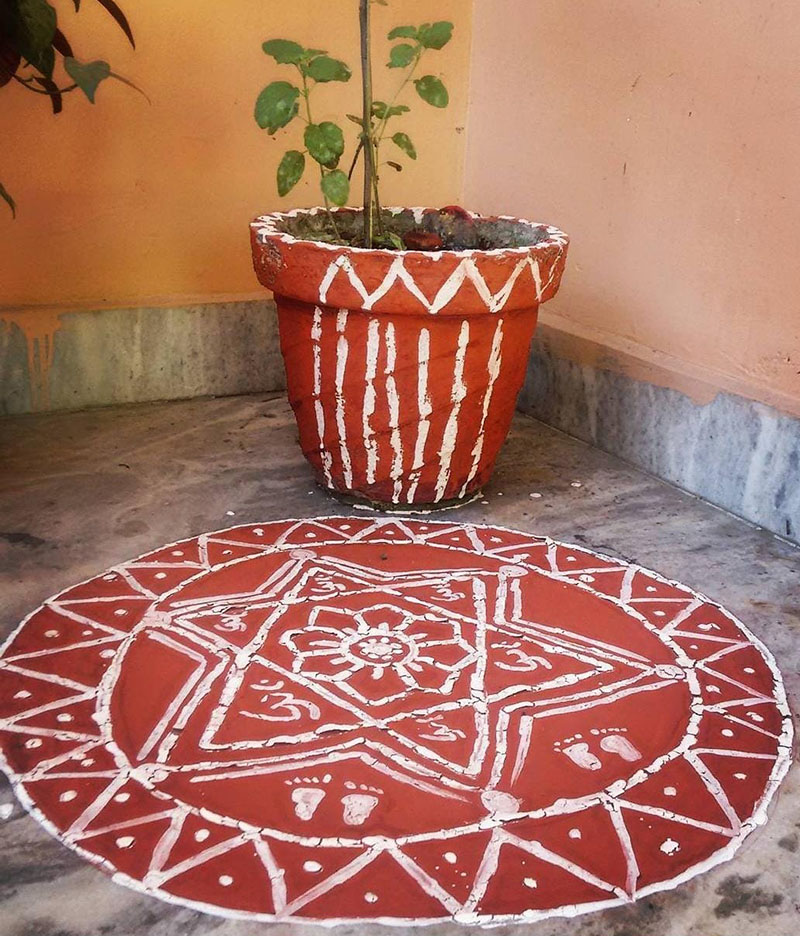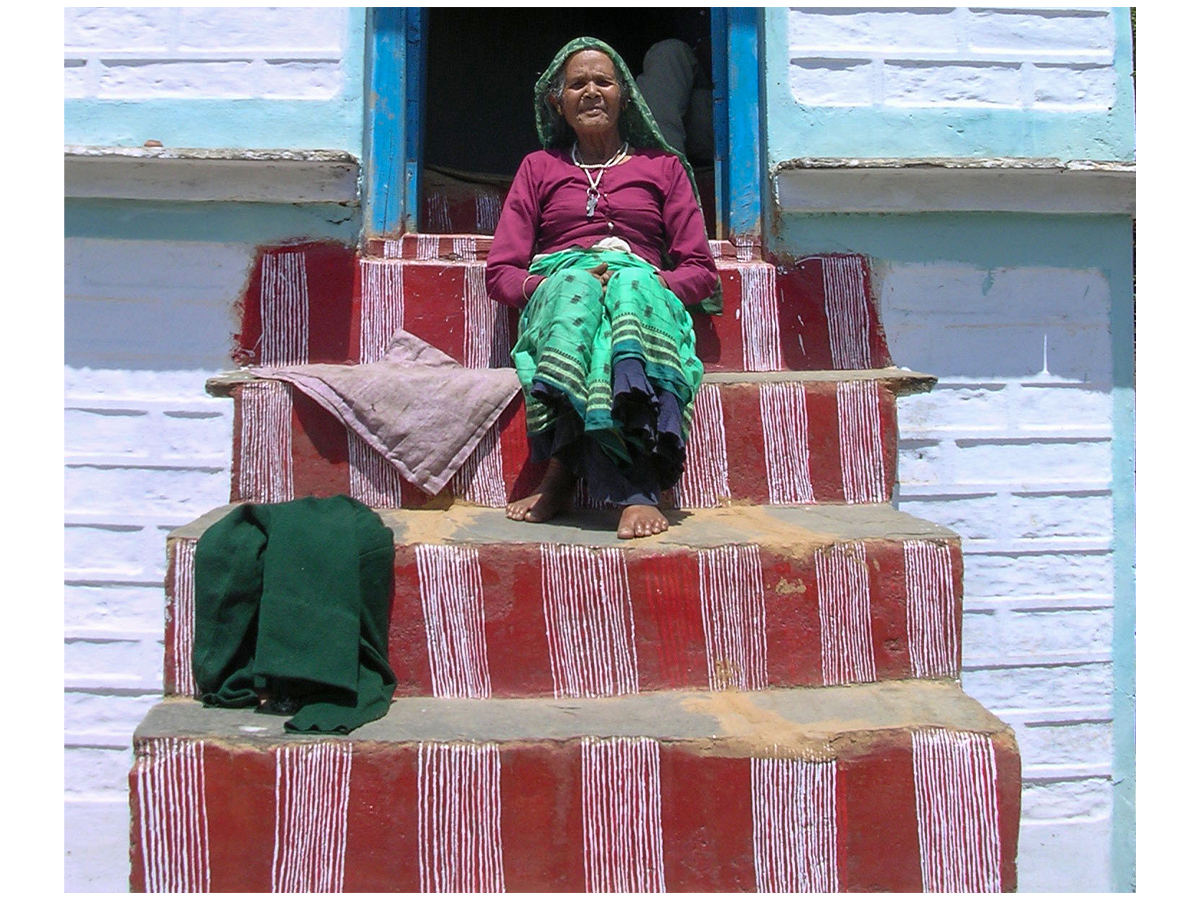Native to the Kumaon region of Uttarakhand, aipan is a form of rangoli. The word aipan has roots in Sanskrit words lepana, meaning to coat or plaster, or arpan, meaning dedication. Aipan is created on the entrances to homes, walls and places of worship during festivals or weddings. Considered a sign of good luck aipan is also closely related to other forms of rangoli prevalent in other parts of the country such as alpona, muggu, or kolam, amongst others.
Traditionally, to make aipan, the surface has to be coated with a cow-dung paste to create a base for the red colour and to make the surface dust-proof. This layer of cow-dung is followed by a layer of red-clay paste, known as geru. Once it’s dried the designs are rendered using bisvar, a rice flour paste prepared by soaking rice overnight and grinding it. The artist can draw the aipan using their fore, middle and ring fingers. In some instances, a cotton rag is attached to a stick to create a brush.
Though the patterns may vary considerably — from elements of nature to geometric patterns — the drawing of the design normally begins with a dot, which symbolises the centre of the universe. Some traditional designs are made for specific purposes. Saraswati chauki is created on the platform on which the deity is placed; it contains a five-point star with a swastika or a lamp at the centre. Syo aipan is especially drawn during the eleventh day of the birth of a child and consists of geometric patterns. The long vertical lines, called vasudhara, are also an essential part of aipan’s designs. Traditionally, since the aipan is mostly created by women, designs are passed on from mother to daughter or daughter-in-law. In some cases, the aipan may also be created on cloth.










